14.3.3
1. 2024 Longchen Paper & Packaging Co., Ltd. and National Taiwan Ocean University Joint Project Results Presentation Conference
2024財團法人榮成永續發展環保基金會與國立臺灣海洋大學合作計畫成果發表會
Since 2019, National Taiwan Ocean University and Longchen Paper & Packaging Co., Ltd. have jointly launched a collaboration project on Marine Environmental Protection and Sustainable Development. Each year, Longchen Paper & Packaging Co., Ltd. has provided over NT$2 million in funding to support the implementation of related programs at our university. In 2024, marking the fifth anniversary of this partnership, a Results Presentation Conference was held at our university to showcase and promote the achievements of the collaboration. The event was attended by approximately 80 participants, who listened to the project outcomes. To date, 29 students have taken part in the program, deeply embedding the concept of sustainable development in their minds and actions.
Sustainable Impact:Since 2019, the university has partnered with the Rongcheng Foundation for Sustainable Development to implement projects on "Marine Environmental Protection and Sustainable Development," with over NT$2 million in annual funding. Over five years, this collaboration exemplifies SDG 17.2.5 through a long-term public–private partnership advancing marine sustainability. The initiative integrates marine ecosystem protection (SDGs 14.2.2, 14.2.3), ocean research and education (14.3.1, 14.3.3), sustainable fisheries management (14.4.2, 14.4.3), and conservation area promotion (14.5.2), while also fostering climate awareness (13.3.5). The 2024 results symposium showcased achievements to around 80 attendees and engaged 29 students in hands-on projects, embedding sustainability values and demonstrating the power of academia–foundation collaboration in advancing marine conservation and climate education.
本校與財團法人榮成永續發展環保基金會自2019起開展「海洋環境保護及永續發展」合作案,由榮成永續發展環保基金會每年提供超過200萬元經費供本校執行相關計畫。2024年雙方合作滿5年,故決定於本校舉辦成果發表會,推廣合作成果。 發表會當日共有約80人出席聆聽計畫成果,本合作更已有29位學生參與計畫,將永續發展的觀念深植於心。
永續影響力:本校自2019年與榮成永續發展環保基金會合作推動「海洋環境保護及永續發展」計畫,每年投入逾200萬元資源,持續五年推展海洋教育與保育行動,展現公私協力落實SDG 17.2.5「建立長期夥伴關係」。計畫內容涵蓋海洋生態保育(14.2.2、14.2.3)、海洋研究與教育推廣(14.3.1、14.3.3)、漁業與資源永續利用(14.4.2、14.4.3)、以及海域保護區推動(14.5.2),並融入氣候行動教育(13.3.5)。成果發表會除促進知識分享,也吸引29位學生參與,深化永續素養與行動實踐,展現學界與基金會共同推動海洋永續的成效。
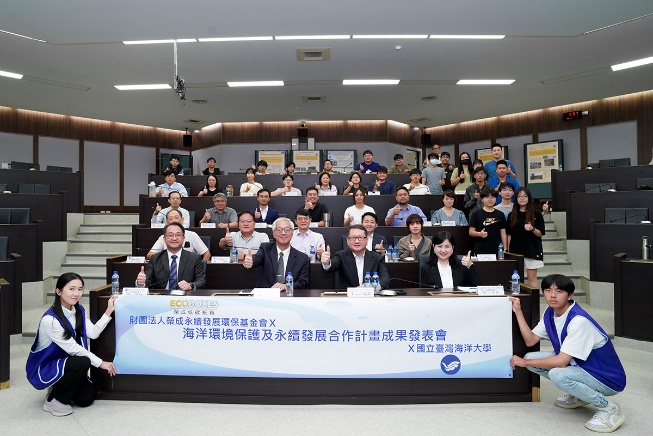
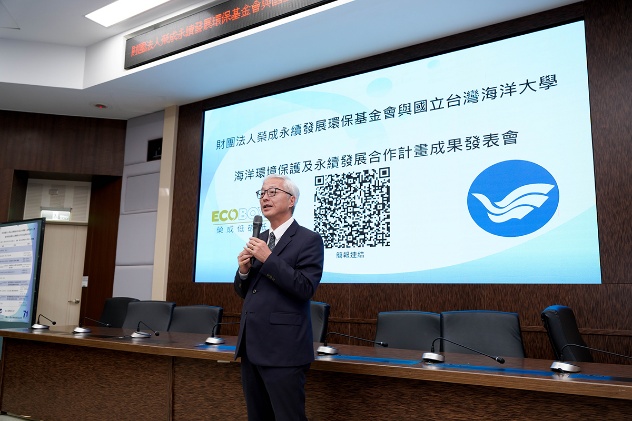
Evidence:
https://research.ntou.edu.tw/p/412-1021-12463.php?Lang=zh-tw
2. Guidance for Establishing a Friendly Aquaculture Production Model (Year 3)
輔導建立友善養殖生產模式(第三年)
Changhua's coastal areas boast rich and diverse ecosystems and fishery resources. The Changbin area has developed industrial zones, while the Hanbao, Wanggong, and Yongxing areas have reclaimed land for fish pond aquaculture, yet still retain Taiwan's largest mudflat wetlands and natural coastal landscapes. Changhua is one of Taiwan's main aquaculture production regions, with hard clams being the primary species farmed. The coastal aquaculture area in Changhua County spans nearly 1,600 hectares, primarily concentrated in Fangyuan Township (about 1,200 hectares), with several hundred hectares also in Fuxing and Shengang Townships. In recent years, extreme climate impacts (temperature fluctuations, sudden heavy rains, water shortages), combined with long-standing improper human management practices (overstocking, deteriorating nearby water sources), have led to poor aquaculture results and declining profits, severely affecting fishermen's livelihoods. The frequent abandonment of farming due to losses is detrimental to the industry's sustainable development. Under the guidance of the Fisheries Agency and the county government, the "Changhua County Aquaculture Youth Association" was established to integrate local youth energy and drive regional added-value growth. Founded in October 2020, it currently has 67 members spread across Changhua's three major aquaculture production areas: Hanbao, Wanggong, and Yongxing (see Figures 1, 2, 3). Given the escalating impacts of climate change making aquaculture management increasingly difficult, traditional experience-based methods can no longer cope with the unpredictable climate variations. Moreover, most association members have not received formal aquaculture education and training, making it challenging to effectively assess and address the challenges and issues arising during the aquaculture process, leading to unstable cultivation rates and difficulty improving operational performance. According to the United Nations Sustainable Development Goals (SDGs), sustainable and safe seafood supply chains have become an international development trend. However, most aquaculture operators pursue the highest profit per unit area, primarily adopting high-density intensive aquaculture models, with excessive feed and drug use, causing significant harm to aquaculture organisms and the ecological environment, and raising concerns about the quality and safety of seafood products.
Sustainable Impact: The coastal region of Changhua, home to Taiwan’s largest clam aquaculture zone and extensive mudflat wetlands, faces increasing stress from climate change and environmental degradation. To strengthen local resilience, National Taiwan Ocean University supported the creation of the Changhua Young Aquaculture Alliance, integrating government guidance, industry collaboration, and academic expertise.
The program advances sustainable aquaculture practices through education, technology transfer, and adaptive management, equipping young farmers with practical skills and ecological awareness. It promotes responsible aquaculture and fosters environmentally friendly production models that mitigate climate risks while enhancing community livelihoods.
This initiative directly supports SDG 14.3.1–14.3.4, encompassing marine education, scientific innovation, sustainable fisheries management, and climate adaptation. It also contributes to SDG 17.2.1, 17.2.5 by building strong multi-stakeholder partnerships and facilitating cross-sector collaboration. Through shared knowledge and capacity-building, the project establishes a replicable model for sustainable coastal fisheries and community-based marine stewardship in Taiwan.
彰化沿海擁有豐富多樣的生態與漁業資源,彰濱一帶有已開發之工業區,漢寶、王功與永興區多填海作為魚塭養殖使用但仍保有臺灣最廣大的泥灘濕地與自然海岸地景。彰化地區為我國養殖漁業主要產區之一,區內以文蛤為大宗養殖物種,彰化縣沿海養殖文蛤近1,600公頃,主要集中在芳苑鄉,多達1,200公頃,福興鄉和伸港鄉也有幾百公頃。近年因受極端氣候衝擊影響(溫差、突然性暴雨、缺水)加上長久以來人為管理方式不當(放養密度過高、附近水源惡化),導致養殖成效不佳收益逐年下滑,嚴重影響漁民生計,因不堪虧損而棄養之情事頻繁發生,不利產業永續發展。日前在漁業署及縣政府輔導下,成立「彰化縣養殖青年聯誼會」,希望整合在地青年能量帶動區域加值成長,成立於民國109年10月,現有會員67位,遍布彰化三大養殖生產區:漢寶養殖生產區、王功養殖生產區、永興養殖生產區,有鑑於近年氣候變遷衝擊加劇導致養殖管理日趨艱難,沿襲傳統之經驗法則已無法應付詭譎多變之氣候變化,加諸大部分聯誼會成員均未受過正規養殖教育訓練,對於養殖過程中所產生之挑戰與問題變化無法做出有效判斷與處置,導致育成率不穩,經營績效難以提升。 依據聯合國永續發展目標(SDGS),永續、安全之水產品供應鏈已成為國際發展趨勢,惟大部分養殖業者為追求單位面積最高獲利,多以高密度集約養殖模式為主,大量餌料投餵及藥物使用,對養殖生物及生態環境造成莫大危害,同時也產生水產品品質及安全性不佳之疑慮。
永續影響力:彰化沿海兼具濕地生態與養殖漁業特色,近年因氣候變遷與環境惡化導致漁民生計受影響。為促進漁業永續發展,海洋大學協助成立「彰化縣養殖青年聯誼會」,整合政府、產業與學研資源,推廣責任制養殖與環境友善技術。計畫同時導入氣候調適與生態管理知識,培養青年漁民專業技能,建立可持續的水產經營模式。此舉符合 SDG14.3.1–14.3.4 強調之教育、科研與氣候調適目標,並實踐 SDG17.2.1、17.2.5 的跨域夥伴合作與知識共享,展現學術支持地方漁業轉型的永續典範。
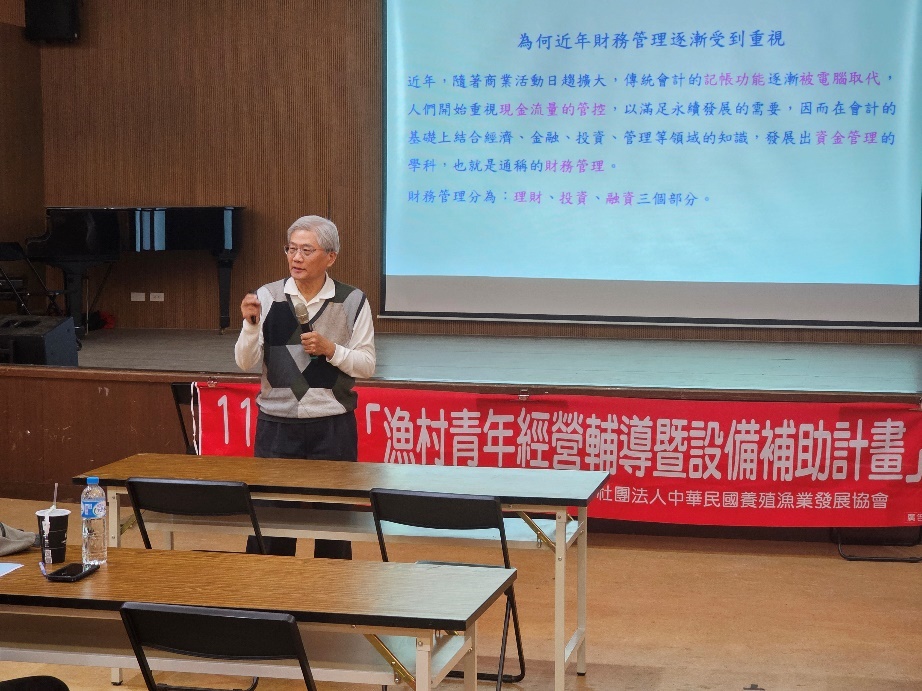
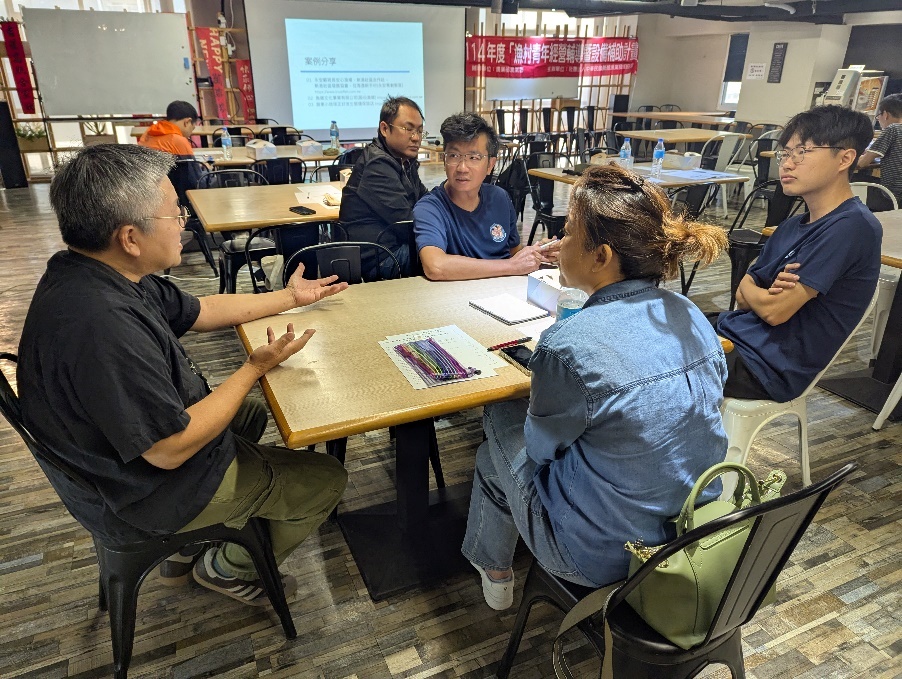
Evidence:
https://www.fish1996.com.tw/4-1-7.html
3. Environmental Education Series: Sustainable Oceans & Circular Resources
「永續海洋-循環資源」系列環境教育活動
Sustainable use of marine resources has become a global consensus. Through marine environmental education, we convey concepts and hands-on practices in biological resource restoration, the circular economy, water safety, and the hazards of microplastics. Centered on the ethos of "clean the sea, understand the sea, get close to the sea, and enter the sea," our marine science outreach—combined with activities such as stock-enhancement releases and seed-stock cultivation—advances marine environmental policies and the goals of resource circularity. We completed 43 marine education sessions with a total of 3,156 participant attendances. Program content spanned coral introduction and conservation, coral planting and restoration, algae literacy, stock releases to coastal waters, microplastic hazards, fish and seaweed food education, coastal cleanups, geological field surveys, and on-water experiential activities.
Sustainable Impact:This initiative, centered on "Clean the Sea, Know the Sea, Approach the Sea, Enter the Sea," integrates ecological restoration, coral conservation, and microplastic awareness through experiential learning. It fulfills SDG 13.3.1 by promoting climate and environmental education, and SDG 13.3.5 through partnerships with NGOs on climate-related outreach. Activities such as coral propagation, marine species release, and pollution awareness align with SDG 14.2.2, 14.2.3, 14.3.1, and 14.3.3, which emphasize ecosystem restoration and pollution reduction. Additionally, coastal cleanups and coral planting support SDG 14.5.2 on marine conservation. The 43 public courses and hands-on experiences also correspond to SDG 4.3.4, representing off-campus educational outreach that enhances ocean literacy and encourages sustainable community engagement.
海洋資源永續利用已成為國際共識,透過海洋環境教育傳遞生物資源復育、循環經濟、水域安全及微塑膠危害之觀念與實際體驗,以「淨海、知海、近海、進海」為核心進行海洋科普教育,並搭配生物放流與種苗培植等活動,可落實海洋環保政策之推動與資源循環利用之目標,完成43場次之海洋教育課程,共計3156人次,活動內容涵蓋珊瑚介紹及保育、珊瑚種植復育、藻類知識科普、海域放流、微塑膠危害、食藻教育、海岸淨灘、地質踏查、食魚文化、水上體驗等一系列活動。
永續影響力:此活動以「淨海、知海、近海、進海」為主軸,結合生物復育、珊瑚保育與微塑膠防治等教育體驗,屬於SDG 13.3.1的氣候教育推廣及13.3.5與NGO合作推動氣候行動之實踐。同時透過海洋資源復育與生物放流,符合SDG 14.2.2、14.2.3及14.3.1、14.3.3對保護與復育海洋生態系及減少海洋污染的目標;再者,海岸淨灘與珊瑚種植亦落實SDG 14.5.2之海洋保護行動。而多場公眾課程與體驗教育則對應SDG 4.3.4之校外教育外展,推動全民海洋素養與永續行動。
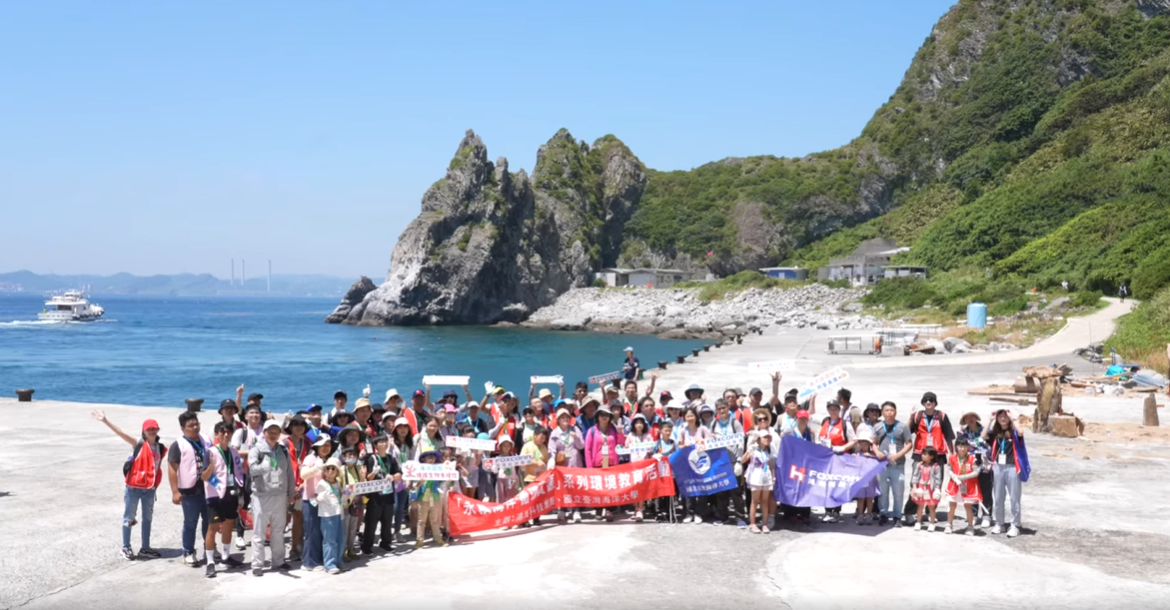
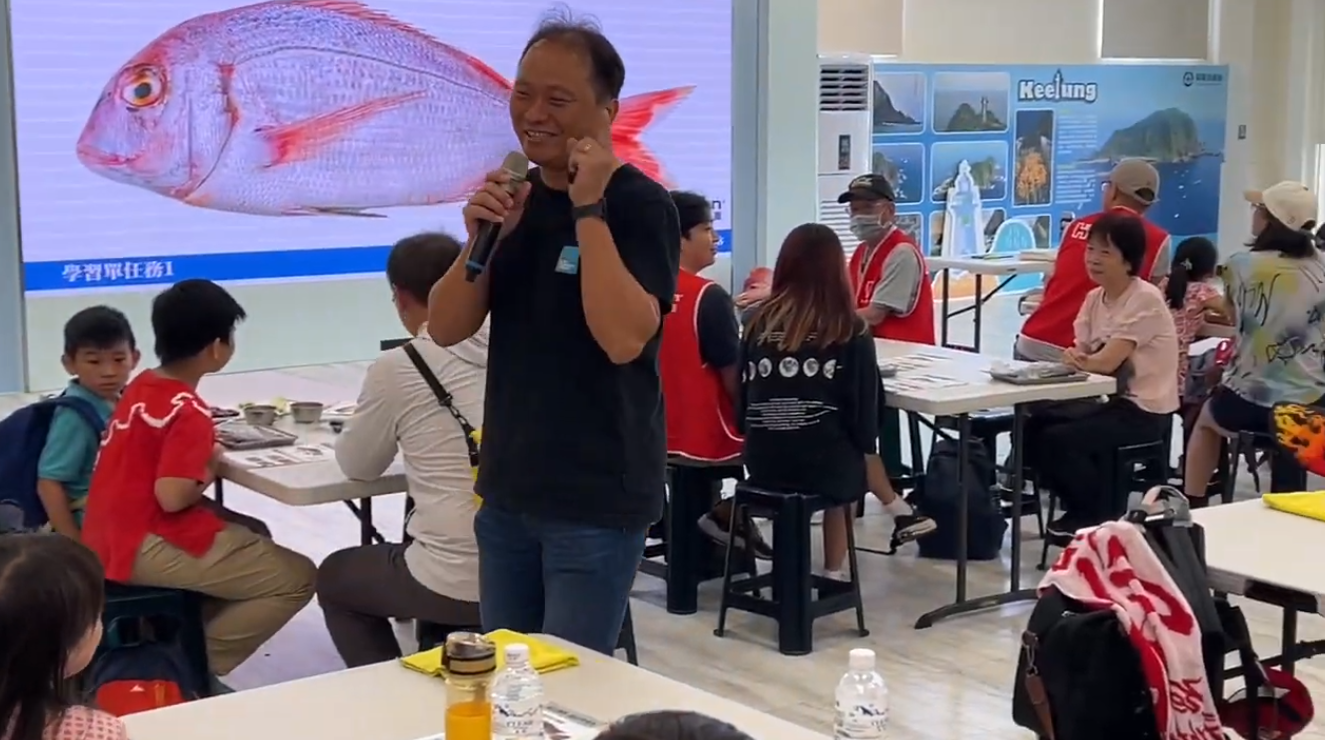
Evidence:
https://www.facebook.com/watch/?v=1781814792357038
https://www.facebook.com/watch/?v=465669422909823
https://www.youtube.com/watch?v=cZoxPo4zIw8
https://www.youtube.com/watch?v=0LIpe_Lx1Zo
https://www.youtube.com/watch?v=POkOR121aWc
4. Cultivation Center for Aquatic Organisms Promotes Seaweed Breeding and Conservation
「海洋生物培育館」推動海藻育種與保育
In response to the university's growing needs for algae development and utilization, marine organism cultivation, breeding, and live experimental research, the Center of Excellence for the Oceans (CEO) collaborated with the Rising Sun Education Foundation in 2019 to establish a large-scale Cultivation Center for Aquatic Organisms on campus. The construction was funded by a NT$20 million donation from the Foundation, while the CEO is responsible for its management and operation. The Cultivation Center for Aquatic Organisms, with a total floor area of approximately 500 ping (about 1,650 m²), houses the Taiwan International Algae Research Fund (TIARF), which primarily promotes research on the cultivation and utilization of macroalgae. The Center enhances the university's capacity in marine biology and aquatic technology research, and is also open for visits by governmental institutions and educational organizations, serving as a public platform for marine science education and outreach. By the end of 2024, the Center had successfully cultivated and preserved 45 species of macroalgae, including: • Green algae (21 species) such as Caulerpa lentillifera, Caulerpa racemosa var. laetevirens, Ulva lactuca, Ulva reticulata, and Codium fragile; • Brown algae (7 species) such as Sargassum horneri, Sargassum siliquastrum, Ecklonia cava, and Padina arborescens; • Red algae (17 species) including Gracilaria spp., Kappaphycus alvarezii, Eucheuma denticulatum, Porphyra spp., Gelidium spp., and Ahnfeltia plicata. In addition, several economically valuable species, such as Gracilaria coronopifolia and Codium fragile, have been used for seedling technique development, while Ulva prolifera, Porphyra, and Laminaria are preserved in different reproductive forms, such as filamentous and protoplast stages. In 2024, the total macroalgae production reached 545.6 kg, of which 268 kg were provided through academic collaborations. Besides internal use by the university, 31 batches of samples were supplied to National Cheng Kung University, Academia Sinica, and private industry partners for studies on natural product analysis, algal product development, and marine aquaculture applications. In the same year, the Center received 46 visiting groups totaling 799 visitors, including representatives from the National Academy of Marine Research, the National Science and Technology Council, as well as professors from Japan, France, the United States, and the Philippines, who visited to experience the algae cultivation facilities of the Cultivation Center for Aquatic Organisms.
Sustainable Impact:The collaboration between the Marine Center and the Sunrise Education Foundation to establish the "Marine Life Cultivation Hall"demonstrates strong alignment with SDG 14.2.2 by restoring and sustainably utilizing coastal and marine ecosystems through large-scale seaweed preservation and cultivation. The facility's educational outreach and research dissemination correspond to SDG 14.3.1, emphasizing marine science education and awareness. Furthermore, by sharing cultivated species and technologies with universities, research institutes, and industries, it fulfills SDG 14.3.3, which promotes research cooperation and knowledge exchange on marine resources. This initiative embodies the integration of academia, industry, and the public in advancing sustainable marine development and biodiversity conservation.
因應學校發展藻類開發利用、海洋生物培育、育種與活體試驗需求增加,海洋中心與財團法人旭日教育基金會合作於2019年在校內增建大型海洋生物飼育設施「海洋生物培育館」,由基金會捐款2,000萬元建造工程費用,海洋中心負責管理營運。「海洋生物培育館」總樓地板面積約500坪,館內設置「臺灣國際藻類研究基金委員會」,主要推動大型藻類的培育與開發利用研究。「海洋生物培育館」強化海洋生物及水產科技的研究,同時開放機關團體預約參觀,提供社會大眾認識水生生物的場館,推廣海洋教育。 至2024年底,養殖藻種計有綠藻21種(小葉蕨藻、長莖葡萄蕨藻、針葉蕨藻、總狀蕨藻大葉變種、大野石蓴、網石蓴、滸苔、法囊藻、偏腫法囊藻、氣生硬毛藻、青海菜、羽藻、仙掌藻、帚狀法囊藻、香蕉菜、杉葉蕨藻、趨化蕨藻、舌葉蕨藻、可食松藻、大葉仙掌藻、萊氏仙掌藻)、褐藻7種(冬青葉馬尾藻、銅藻、羊栖菜、大團扇藻、圈扇藻、扇形棕葉藻、錫蘭網地藻)及紅藻17種(海木耳、卡帕藻、麒麟菜、黃氏葉膜藻、紅翎藻、紅葡萄藻、臺灣海膜(平展海膜)、殼狀珊瑚藻、皮絲藻、弓龍鬚菜、糾結龍鬚菜、張氏龍鬚菜、可食龍鬚菜、縊龍鬚菜、麒麟龍鬚菜、海人草、金膜藻)等三大類,合計45種大型海藻的保種及擴大培養;此外,數種具有經濟價值之大型海藻,如雞冠菜、纖細松藻等藻種,進行培苗技術建立;另有青海菜、紫菜、海帶等大型海藻,以絲狀體、原生質體等不同形式的繁殖體藻體保存。2024年大型海藻總產量達545.6Kg,其中268Kg以學術合作名義,除提供本校使用外,亦提供國立成功大學、中央研究院、民間業者等單位索取計有31批次,分別進行天然物分析、藻類產品開發與海上養殖使用。2024年共計有校內、外貴賓、各級學校、業界等單位參訪,共計46場次799人參觀。包含國家海洋研究院,國科會,以及日本、法國、美國、菲律賓等大學教授來訪,體驗海洋生物培育館之藻類場域。
永續影響力:本案由海洋中心與基金會合作設立「海洋生物培育館」,進行大型海藻保種、繁殖與技術開發,具體落實SDG 14.2.2中「推動海洋與沿岸生態系復育及永續利用」的目標。館內研究與展示活動推廣藻類應用與保育知識,對應SDG 14.3.1強調「提升海洋科學研究與教育宣導」。此外,藉跨校與產業共享藻種資源及技術,促進藻類產品開發與海上養殖應用,符合SDG 14.3.3「推動海洋資源研究合作與知識分享」,展現學術、產業與社會共創的永續發展實踐。
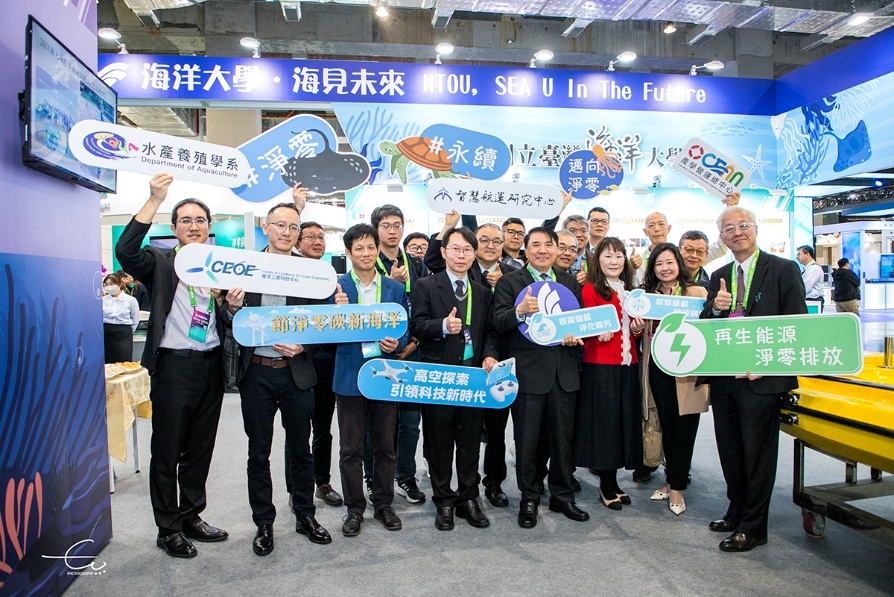
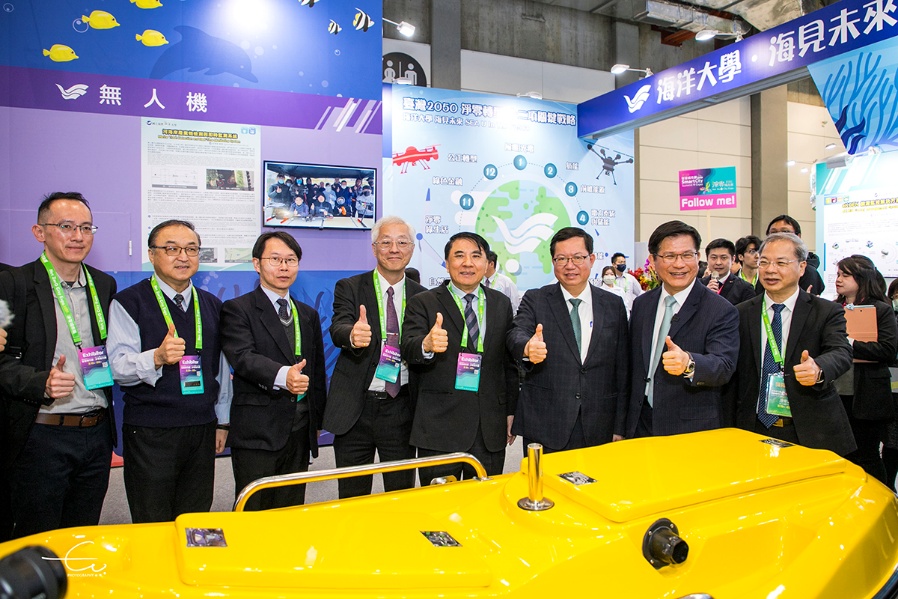
Evidence:
https://mprp.ntou.edu.tw/p/404-1017-97847.php?Lang=zh-tw
5. 2024 World Oceans Day Fish Fry Ecological Release Event
2024世界海洋日放流活動
Here is the English translation of the story-based summary from the perspective of National Taiwan Ocean University (NTOU): Translating Knowledge into Action: NTOU USR Team Leads Marine Education and Ecological Stock Release at Yehliu Under the banner of the 2024 World Oceans Day theme, "Awaken New Depths," National Taiwan Ocean University (NTOU) once again demonstrated that a university is not just a repository of knowledge but a critical driver of marine sustainable development through tangible action. The NTOU USR (University Social Responsibility) Team, in collaboration with partners including the Taiwan Ocean Conservation and Fisheries Sustainability Foundation and the Fisheries Agency, successfully hosted a "Fish Fry Ecological Release Event" on June 7th at the Neptune Pier area in Yehliu, New Taipei City. For NTOU, this event was more than just a response to government policy; it was a prime location for implementing the USR project and cultivating the future talents of the marine sector. Extending Education from the Classroom to the Coast: NTOU firmly believes that marine education must be rooted early. Under the guidance of Vice Minister Huang Chao-Chin of the Ministry of Agriculture, the event specifically invited students from Yehliu Elementary School to participate. Together, they released healthy native species—including Yellowfin Seabream, Scribbled Snapper, and Ornate Spiny Lobster—into the ocean. Through explanations and guidance on the correct stocking mechanisms provided by the Department of Tourism faculty and students, the children personally experienced the scientific conservation principle of "releasing the right species in the right way, at the right time and location." This effort successfully planted the seeds of sustainable fisheries resource utilization in young hearts. Validating Effectiveness with Scientific Assessment: As a leading oceanographic institution, NTOU has a long history of cooperation with the Fisheries Agency, utilizing advanced technologies like gene molecular markers to evaluate the effectiveness of stock release. Research has confirmed that, over the past five years, over 40% of certain economically valuable species caught in the wild originated from these healthy released fingerlings. This provides solid scientific evidence for resource enhancement and highlights NTOU's crucial academic contribution to boosting marine productivity and generating "Three-L" positive spillover effects (Ecology, Livelihood, and Production). National Taiwan Ocean University is committed to continued collaboration with various partners to safeguard coastal habitat environments. Simultaneously, these practical fieldwork opportunities provide valuable industry experience for students, ensuring NTOU contributes both academic wisdom and practical strength to the sustainable development of Taiwan's marine environment and fisheries resources.
Sustainable Impact:The university's USR team, in partnership with the Fisheries Agency and related foundations, organized a marine ecological release event in Yehliu under the World Oceans Day theme "Awaken New Depths." The program aligns with SDG 14.3.2 by promoting marine education through hands-on learning with local students. Its use of genetic tagging to assess release outcomes fulfills SDG 14.3.3, demonstrating scientific collaboration in marine research. The activity supports SDG 14.3.4 by enhancing sustainable fisheries through the release of native species under controlled, science-based methods. Finally, by engaging government agencies, NGOs, and the public in habitat protection and education, it exemplifies SDG 14.5.1's focus on community-based marine conservation, merging academic knowledge with social responsibility and real-world impact.
以知識實踐責任:海大USR團隊在野柳的海洋教育與生態放流課 在2024年「喚醒新深度」(Awaken New Depths)的世界海洋日主題下,國立臺灣海洋大學再次以實際行動,證明大學不僅是知識的殿堂,更是推動海洋永續發展的關鍵力量。 海大USR團隊與臺灣海洋保育與漁業永續基金會、漁業署等夥伴攜手,提前於6月7日在新北市萬里區野柳海王星碼頭,成功舉辦了一場「魚苗生態放流活動」。對海洋大學而言,這場活動不僅是響應政府政策,更是落實大學社會責任(USR)計畫、培育未來海洋人才的最佳場域。將教育從教室延伸到海岸:海大堅信,海洋教育必須從小紮根。本次活動在漁業署黃昭欽次長的示範下,特別邀請野柳國小的學童們共同參與,將健康的黃錫鯛、川紋笛鯛、錦繡龍蝦等原生種苗投入大海。透過觀光系師生對正確放流機制的解說與指導,學童們親身體驗了「在對的時間及地點,用對的方式放流對的魚種」這一科學保育觀念,讓漁業資源永續利用的種子深植人心。以科學評估實踐效益:作為國內頂尖的海洋學府,海大長期與漁業署合作,運用基因分子標識等先進技術評估放流效益。研究結果顯示,過去五年放流的種苗中,部分經濟物種在野外捕撈的比例竟有40%以上來自於這些健康種苗。這不僅為資源增裕提供了扎實的科學依據,更突顯了海大在提升海洋生產力與創造「生態、生活、生產」三生活化外溢效果中的關鍵學術貢獻。國立臺灣海洋大學將持續與各界夥伴合作,共同守護沿近海棲地環境,同時藉由這些實踐場域,為學生提供寶貴的產業連結經驗,持續為臺灣的海洋環境與漁業資源永續發展貢獻學術智慧與實踐力量。
永續影響力:本活動以「魚苗生態放流」為核心,結合野柳國小師生參與與政府、基金會協作,推動海洋教育與社會實踐,符合SDG 14.3.2「提升公眾海洋意識與教育推廣」。透過基因分子標識技術進行放流成效追蹤,展現SDG14.3.3「推動海洋研究合作與科學應用」。活動所釋放的原生種苗與科學化管理機制,呼應SDG 14.3.4「促進永續漁業與資源復育」。最後,藉由USR計畫及跨界夥伴合作,共同守護沿岸棲地並鼓勵民眾參與,具體落實SDG 14.5.1「社區參與式海洋保護與教育」。


Evidence:
6. Top Scientists -Animal Science and Veterinary Tin-Yam Chan
Research.com 2023 年全球頂尖動物科學家海大教授陳天任獲全臺第1
Research.com In 2024, the world s top animal scientist, Professor Chan Tin-Yam won the first animal scientist in Taiwan. Zoology, Decapoda, Ecology, Monophyly and Crustacean are his primary areas of study. His Zoology research incorporates themes from Sister group, Phylogenetics and Phylogenetic tree. His Decapoda study results in a more complete grasp of Fishery. His Ecology study combines topics from a wide range of disciplines, such as Pleistocene, Glacial period, Species complex and East Asia. He has included themes like Paraphyly and Systematics in his Monophyly study. His Crustacean research is multidisciplinary, incorporating perspectives in Adaptation and Parallel evolution.
Sustainable Impact:Professor Tian-Ren Chen of National Taiwan Ocean University was recognized by Research.com in 2024 as the top zoologist in Taiwan and one of the world’s leading scientists in animal science. His research spans zoology, decapod crustaceans, ecology, and evolution, integrating phylogenetic analysis, population studies, and biogeography. His findings on decapod evolution and distribution enhance understanding of fisheries resources and marine biodiversity in East Asia. This aligns with SDG 14.3.3, which emphasizes advancing marine and ecological research. Professor Chen’s interdisciplinary work contributes valuable scientific knowledge to marine resource management, biodiversity conservation, and sustainable ecosystem governance.
Research.com 2024年全球頂尖動物科學家海大教授陳天任獲全臺第一主要研究領域動物學、甲殼十足目動物、生態學、演化學。動物學研究融合了演化親緣關係分析。甲殼十足目動物研究成果有助全面性地掌握漁業利用。生態學研究結合了廣泛學科的主題,如動物地理分布,種群和東亞系統演化研究的主題包括有單系群及側系群的分析。甲殼類動物研究是整合不同學科,並側系群的分析。甲殼類動物研究是整合不同學科,並具適應和平行演化的觀點。
永續影響力:海大陳天任教授獲Research.com評選為2024年全球頂尖動物科學家,全臺排名第一,其研究涵蓋動物學、甲殼十足目動物、生態學與演化學,結合演化親緣關係與種群分布等分析方法,深化對東亞海洋物種多樣性與演化歷程的理解。此研究不僅增進對漁業資源的掌握,也強化海洋生態與生物多樣性保育的科學基礎,符合SDG 14.3.3「推動海洋科學研究與知識貢獻」之精神,展現學術研究支持海洋永續管理與科學決策的重要價值。
Evidence:
https://elsevier.digitalcommonsdata.com/datasets/btchxktzyw/8
7. Outdoor Learning and SDGs Interactive Exhibition & Challenge
戶外教育活動暨SDGs策展闖關活動
Here is the English translation of the story-based summary from the perspective of National Taiwan Ocean University (NTOU): Connecting the Generations for Sustainability: NTOU Tourism Department Lights Up Local Marine Education in Badouzi with SDGs Exhibition In the ongoing mission to advance University Social Responsibility (USR) and preserve local culture, National Taiwan Ocean University (NTOU) once again demonstrated the perfect synthesis of academic professionalism and practical engagement. On May 22nd, the Bachelor's Program in Marine Tourism Management at NTOU, the National Museum of Marine Science and Technology (NMMST), and the Badouzi Industry Tourism Promotion Association joined forces to host a grand Outdoor Education and SDGs Challenge Stations Event. This marked the first time the three parties combined their initiatives, attracting a record-breaking participation of nearly 400 teachers and students, including kindergarten classes, from Badou Elementary School in Keelung City. NTOU Students' "Real-World" Capstone Project: At the heart of the event was the final project presentation for the sophomore-level "Marine Leisure Management" course. Under the joint guidance of Professor Wang Hui-Chiao of the NTOU Tourism Department and researchers from NMMST, 49 enrolled students self-planned, designed, and produced exhibits for 8 micro-exhibition challenge stations based on the UN Sustainable Development Goals (SDGs). The activities were rich and diverse, ranging from local cultural experiences like the "pickpocket net" demonstration, fishing port explanations, Shulang seawater dyeing, and Caozaiguo (mugwort rice cake) DIY, to the interactive SDGs challenges. These hands-on activities allowed the children to learn about marine life, pollution, and ecological damage in a fun environment, fostering concepts of loving and protecting the sea from a young age and promoting marine sustainability. Cross-Sector Collaboration Illuminates the Local Community: NTOU Tourism Department students showcased outstanding professional skills: 16 students served as guides for the elementary school groups, while 49 ran the exhibitions. Participants voted for the "Best Explanation Award," "Best Knowledge Award," and "Most Popular Award," effectively transforming classroom theory into professional service and stimulating the students' creative thinking and diverse skill sets. A participating student from Badou Elementary School, Class 5, expressed that the college students taught them much knowledge not covered in school, using games to make it memorable. The student found the half-day event fulfilling and enjoyable, with the handmade Caozaiguo being especially meaningful, wishing the event could have lasted a whole day. A NTOU student involved in the exhibition, surnamed Huang, shared that while nervous facing such a large group of children, their eagerness and attentiveness were rewarding. Seeing the children happy brought a huge sense of accomplishment, proving the effort put into the project—from collaborative planning to refining explanations—was worthwhile. Through five consecutive years of USR collaboration with local elementary schools and three years of joint exhibition efforts with NMMST, the NTOU Tourism Department has not only fulfilled its social responsibility and cultivated the nation's first specialized marine tourism management talents but has also effectively promoted the inheritance of local culture and marine sustainability awareness in the next generation.
Sustainable Impact:The Department of Marine Tourism at NTOU collaborated with the National Museum of Marine Science and Technology and the Badouzi Industry Tourism Association to host an SDG-themed outdoor exhibition and interactive learning event, engaging around 400 elementary school students and teachers. University students integrated marine science, SDG concepts, and local culture into creative exhibits and workshops. This initiative aligns with SDGs 14.3.3 and 14.3.4 by advancing marine science education and public awareness, and with SDGs 14.4.2 and 14.5.1 by fostering sustainable resource use, community engagement, and marine conservation partnerships. Through experiential learning and cross-sector collaboration, the program exemplifies university social responsibility (USR) and intergenerational sustainability education.
從小學到大學的永續串聯:海大觀光系在八斗子以SDGs策展點亮在地海洋教育 在推動大學社會責任(USR)和在地文化傳承的道路上,國立臺灣海洋大學(NTOU)再次展現了其專業學術與實踐的完美結合。 5月22日,國立臺灣海洋大學海洋觀光管理學士學位學程、國立海洋科技博物館與八斗子產業觀光促進會三方攜手,共同舉辦了一場盛大的「戶外教育暨SDGs策展闖關活動」。這不僅是三方合作活動首次結合辦理,更一舉吸引了來自基隆市八斗國小,包含幼幼班在內將近400名師生參與,創下歷年紀錄。 海大學生的期末「實戰」成果: 這場活動的核心,是海大觀光系二年級學生們一整學期「海洋休閒管理」課程的期末成果發表。在王彙喬老師和海科館研究員們的共同指導下,49位修課學生將聯合國永續發展指標(SDGs)融入海洋科普,自行企劃、設計並製作展品,打造了8個微策展闖關主題。 活動內容豐富多元,從扒手網體驗、漁港解說、薯榔海水染、草仔粿DIY等在地文化活動,到結合互動遊戲的SDGs闖關,讓小朋友們在歡樂中深入了解海洋生物、污染、生態破壞等議題,從小培養親海、愛海的永續觀念。 跨界合作 點亮地方: 海大觀光系的學生們展現出卓越的專業技能:16位學生擔任領隊引導國小師生,49位學生則負責策展解說,並透過小朋友的票選,競爭「最佳解說獎」、「最佳知識獎」等榮譽,成功將課堂理論轉化為專業服務。 一名參與策展的黃同學分享,面對近400名小朋友雖感壓力,但看到他們認真闖關、玩得盡興,從一開始的生疏到後來的流暢解說,所有的辛苦與努力都轉化成了成就感。而八斗國小五年忠班的張同學則對大哥哥大姐姐們講解的海洋知識和親手製作的草仔粿印象深刻,直呼「半天的活動太短了,希望下次可以有一整天」。 透過連續五年的USR計畫與在地國小的合作,以及連續三年的與海科館的策展串聯,海大觀光系不僅善盡了大學社會責任,培育了全國首個以海洋觀光管理為特色的專業人才,更有效促進了在地文化與海洋永續觀念在下一代的傳承。
永續影響力:國立臺灣海洋大學觀光系攜手國立海洋科技博物館與八斗子產業觀光促進會,共同舉辦「戶外教育暨SDGs策展闖關活動」,串聯大學與在地國小,共約400名師生參與。活動以海洋科普教育為主軸,結合學生策展、實作與地方文化體驗,推廣海洋永續與文化傳承。此舉符合SDG 14.3.3與14.3.4,透過教育推動海洋知識普及;同時呼應SDG 14.4.2與14.5.1,藉跨界合作促進社區參與與海洋保育意識。活動展現USR精神與永續教育連結,達成「從小學到大學的永續串聯」之目標。


Evidence:
8. Aquatic Biology Research and Conservation Center Promotes Marine Stock Enhancement and Conservation along Taiwan's North Coast
本中心「水生生物研究暨保育中心」推動北海岸水產生物增殖放流保育
The Aquatic Biology Research and Conservation Center, under the Center of Excellence for the Oceans, National Taiwan Ocean University (NTOU), has made remarkable contributions in recent years to marine ecological restoration and sustainable resource management.Since 2014, the Center has collaborated with the New Taipei City Government to establish Taiwan's first Demonstration Area for Cultivated Fisheries in Mao'ao, Gongliao. Through advanced artificial breeding techniques, the Center has successfully achieved full-cycle aquaculture for key northern Taiwan marine species such as the mitten squid (Sepioteuthis lessoniana) and the three-spot swimming crab (Portunus sanguinolentus) — from mating and spawning to adult stages — and has continuously carried out large-scale seedling releases to promote sustainable fisheries development. In cooperation with the New Taipei City Government, the Center also launched the “Sustainable Ocean Action and Scientific Resource Restoration” project, representing Taiwan's only marine restoration model jointly led by a local government and a university. This initiative integrates academic research with practical marine conservation efforts. In 2024, the Aquatic Biology Research and Conservation Center incorporated key themes such as resource restoration, circular agriculture, and net-zero carbon emissions, achieving diverse and innovative outcomes. In sea urchin and abalone cultivation, locally produced macroalgae (such as Gracilaria tenuistipitata and Grateloupia filicina) were used as feed to reduce costs and carbon emissions. During the intermediate rearing of fish larvae and the cultivation of crabs and squid, algae including Gracilaria, Chaetomorpha, and Ulva were used to provide shelter and spawning substrates while also improving water quality and supplying natural feed. At the Meiyan Mountain Intermediate Rearing Base, after four years of habitat construction, various artificial substrates have successfully supported the growth of multiple natural macroalgal species. This project also pioneered the use of environmental DNA (eDNA) and metabarcoding techniques to verify the presence of macroalgal spores and filaments on substrates and compare them with actual field observations. Furthermore, these techniques were applied to the species composition analysis of fish paste products in Taiwan, with results published in an international journal revealing that many commercial products contain multiple shark species. In abalone (Haliotis diversicolor) genetic resource management, the Center completed analyses of both released and commercial strains, establishing a scientific foundation for future breeding and restoration programs. In the purple sea urchin (Anthocidaris crassispina) restoration project, 6,000 juvenile urchins were successfully bred and released, with ongoing experiments using agricultural by-products as feed. Additionally, the Center continues to cultivate and release high-value species such as the barred knifejaw (Oplegnathus fasciatus). Moreover, Dr. Te-Hua Hsu, Director of the Aquatic Biology Research and Conservation Center, received the 2024 Taiwan Sustainable Action Award – Outstanding Young Sustainability Leader, recognizing his long-term dedication to marine restoration and sustainable fisheries development. His achievement brings great honor to the Center and highlights NTOU's leadership in advancing marine sustainability in Taiwan.
Sustainable Impact:NTOU's Aquatic Biology Research and Conservation Center, in collaboration with the New Taipei City Government, established Taiwan's first "Aozih Bay Mariculture Demonstration Zone." The center successfully cultivated key species such as cuttlefish and crabs using artificial breeding and integrated macroalgae farming to reduce feed costs and carbon emissions. Advanced technologies like environmental DNA and metabarcoding were applied to monitor macroalgae and identify fish components in surimi products, linking scientific research to practical conservation. These efforts foster sustainable fisheries, habitat restoration, and ecosystem resilience, aligning with SDG 14.3.3 (marine science innovation), 14.5.4 (ecosystem restoration), and 14.5.5 (science-based marine management). The initiative exemplifies how academia drives marine sustainability through applied research, cross-sector collaboration, and ecological restoration.
國立臺灣海洋大學海洋中心轄下之「水生生物研究暨保育中心」,近年來在海洋生態復育與海洋資源管理方面展現卓越成果與具體貢獻。自2014年起與新北市政府合作,以貢寮卯澳為示範基地,建立全國首個「卯澳栽培漁業示範區」。透過人工繁養技術,成功完成北部地區具代表性海產虎斑烏賊(花枝)及鏽斑蟳(花蟹)等物種的養殖,從交配產卵至成體繁殖,並持續進行大量幼苗放流,推動永續漁業發展。本中心與新北市政府共同推動「貢寮水生中心—永續海洋行動與科學資源復育」計畫,建立全國唯一由地方政府與大學共同主導、結合學術研究與實務操作的海洋資源復育模式。2024年「水生生物研究暨保育中心」結合資源復育、循環農業及淨零碳排等議題,展現多元且具創新性的成果。於海膽與九孔養殖中導入自產大型藻類(如龍鬚菜、海木耳)作為飼料,降低飼料成本並有效減碳;在魚苗育成及花蟹、烏賊培育過程中,結合龍鬚菜、硬毛藻及滸苔等藻類,不僅提供生物棲息與產卵空間,同時發揮淨水與餌料供應功能。在美豔山中間育成基地,經四年棲地營造,人工吊掛附著基已成功培育多種天然大藻。本期計畫首度導入環境DNA與元條碼技術,驗證附著基上大藻孢子與絲狀體的存在,並與實際觀察大藻進行比對。同時,該技術亦應用於台灣魚漿製品魚種組成分析,研究結果發表於國際期刊,揭示多數魚漿製品含有多種鯊魚成分。在九孔種原管理方面,完成放流資源培育及商業品系分析,為後續育種與復育提供科學依據;於紫海膽復育放流計畫中,成功培育並放流6,000顆稚膽,並持續以農業副產物開發餌料來源;同時持續推動高經濟價值魚種如條石鯛之培育與放流工作。此外,貢寮水生中心負責人徐德華博士因長期投入海洋復育及永續漁業推廣,榮獲「2024年臺灣永續行動獎-臺灣傑出永續青年獎」,肯定其對國家海洋永續發展的卓越貢獻,也為本中心的努力增添榮耀。
永續影響力: 海洋中心「水生生物研究暨保育中心」與新北市政府合作,建構「卯澳栽培漁業示範區」,以人工繁養技術成功復育虎斑烏賊與鏽斑蟳等經濟物種,並導入大型藻類養殖以降低碳排與成本。中心首度應用環境DNA與元條碼技術於大藻監測與魚漿魚種分析,實現科研與永續治理結合。此計畫促進棲地復育、漁業永續及生態平衡,符合 SDG 14.3.3(推動海洋科學研究)、14.5.4(保育與復育沿岸生態系)、14.5.5(以科學依據支援海洋資源管理),展現大學在永續海洋發展中的關鍵角色。
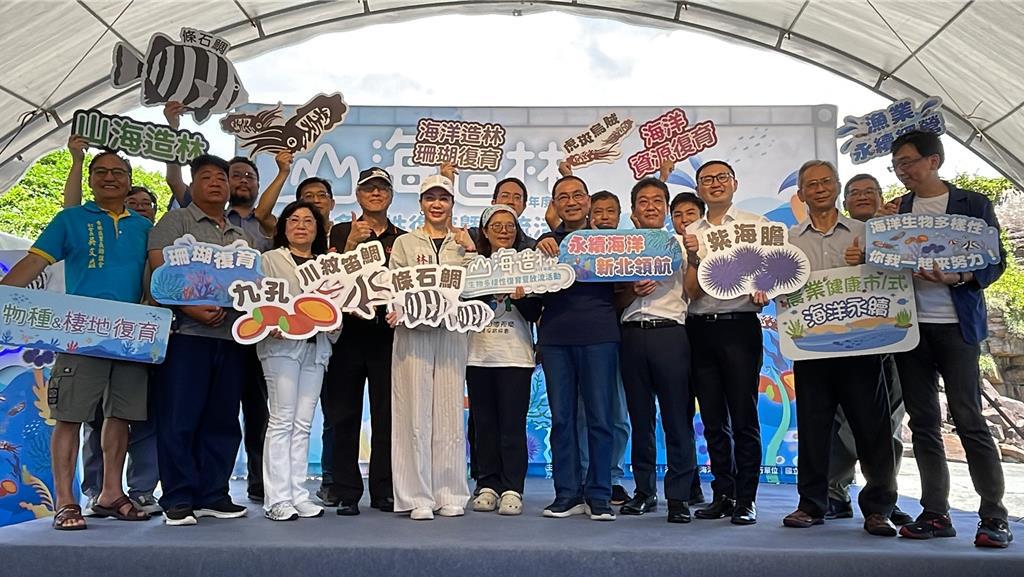
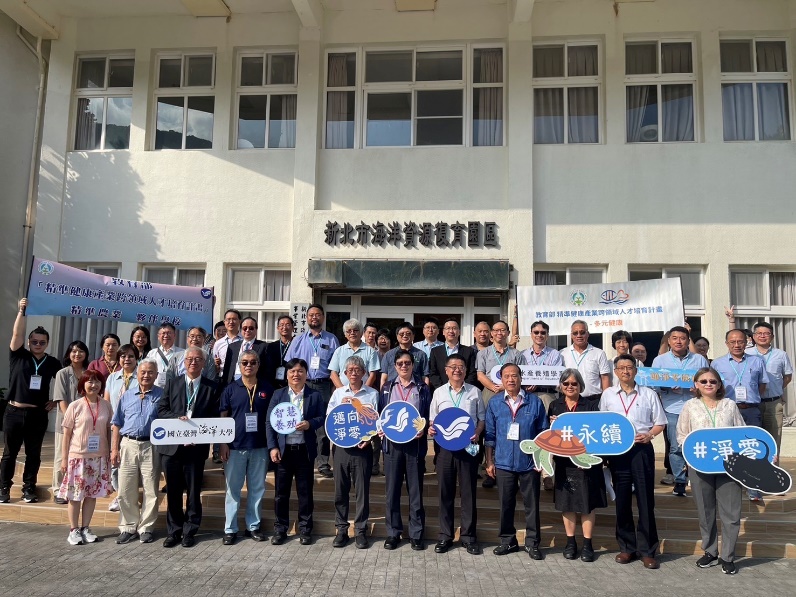
Evidence:
https://www.ctee.com.tw/news/20240720700514-431401
9. The Studies Related Stock Status and Reproductive Biology of Southern Bluefin Tuna, Oilfish And Escolar
南方黑鮪及油魚資源評估及生殖生物學研究
The studies of this project aimed to analyze the characteristics of targeting species of Taiwanese far seas longline fishery in the Indian Ocean for southern bluefin tuna areas for abundance indicators analyses. The cluster analysis could identify the characteristics of targeting species successfully and also explore the temporal and spatial distribution characteristics for various fishing operations of Taiwanese longline fishery. The pattern of the CPUE trends remained similar as the past. The gonads of southern bluefin tuna specimens collected by scientific observers dispatched on the longline vessels operated in the Indian Ocean were updated and analyzed for reproductive biology. most mature females were at regressed or regenerating stages during April to August, and most mature males were at regenerating stages during June to August. Additionally, Oilfish was the bycatch species of large-scale Taiwanese tuna longline fishery targeting albacore in the Indian Ocean. Based on the large-scale Taiwanese tuna longline fishery data of two oilfish species including the oilfish_castor and oilfish_escolar, we performed the prelinminary analyses to estimate the nominal CPUE of these two species.
Sustainable Impact:This research focuses on the stock assessment and biological studies of Southern bluefin tuna and oilfish in the Indian Ocean, analyzing fishery data to evaluate resource status and sustainability. Using scientific models, the team assesses fishing pressure, habitat changes, and population dynamics, providing results and reports to international fisheries organizations for reference in resource management.The study enhances Taiwan's visibility in global marine science while demonstrating its commitment to responsible fisheries utilization and international collaboration. The findings help balance fisheries development with resource conservation, supporting evidence-based decision-making for sustainable ocean governance.This initiative directly aligns with SDG 14.3.3, which emphasizes strengthening scientific research and technological capacity to support the sustainable use and conservation of marine resources. It exemplifies NTOU's contribution to advancing scientific understanding and responsible management of ocean ecosystems.
主要研究目標為印度洋海域捕撈之南方黑鮪及油魚物種之資源相關指標現況及相關漁業生物學研究,運用漁業資料進行漁業資源狀態評估以了解資源現況。同時提供計畫科學研究結果及工作報告作為相關國際漁業組織參考資料,期以科學研究結果增進漁業科學資訊完整性及助於海洋漁業資源保育及永續利用之平衡,並善盡我國身為印度洋重要漁業資源運用國之責任。
永續影響力:本研究聚焦於印度洋海域南方黑鮪及油魚等重要經濟物種之漁業資源現況,透過漁獲資料分析與生物學研究,進行資源量評估與永續利用探討。研究團隊運用科學模型評估漁業壓力、棲地變遷與種群結構,並將成果提供予國際漁業組織作為管理決策參考依據。此計畫不僅提升了臺灣在印度洋漁業科學研究的能見度,也展現我國在國際海洋資源管理中善盡責任與合作精神。研究成果有助於確保漁業利用與資源保育間的平衡,推動以科學為本的永續漁業治理模式。本項工作具體呼應 SDG 14.3.3,即「透過加強科學研究與技術能力建構,改善海洋健康與促進海洋資源的永續利用」,展現海洋大學在國際漁業管理與永續發展中的積極貢獻。
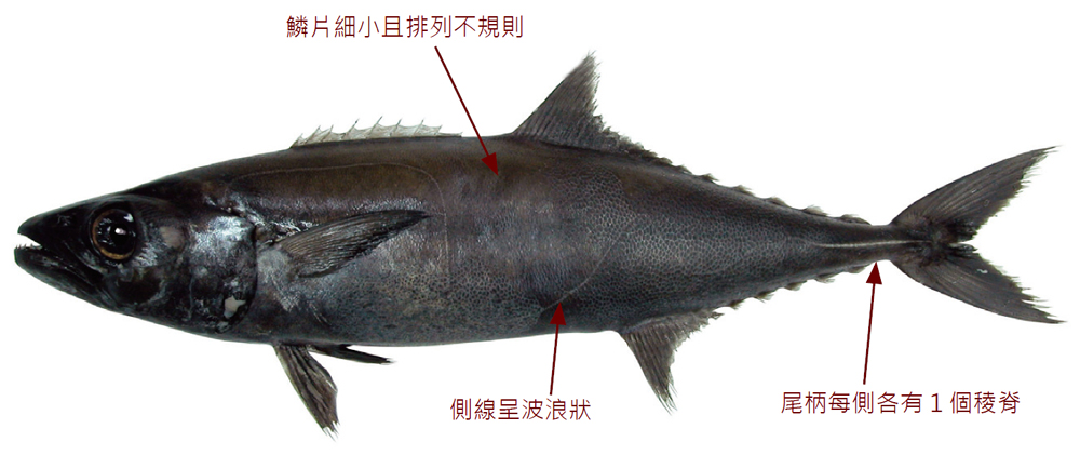
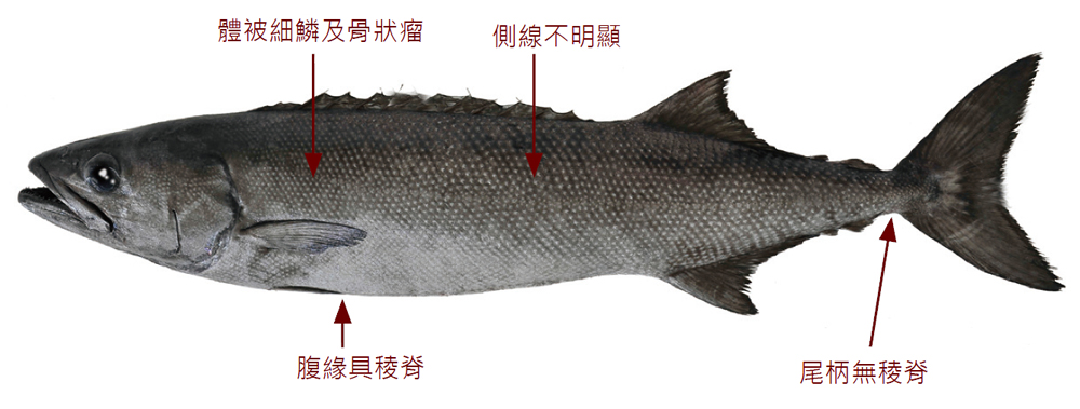
Evidence:
https://kmweb.moa.gov.tw/subject/subject.php?id=51816
https://usr.ntou.edu.tw/var/file/90/1090/img/1658/476329864.pdf
10. Promotion of abalone culture industry: abalone larvae rearing and new breeds development
振興臺灣九孔養殖產業—種苗培育與不同品系研發
The National Taiwan Ocean University has successfully bred the abalone Haliotis diversicolor (108 strain) in collaboration with the Fisheries Research Institute. To continuously enhance the quantity of 108 strains, the project is engaged in conservation, intermediate rearing, and seed breeding while providing guidance and promotion to industry farmers and tracking the effectiveness of these efforts. At least 30,000 seedlings of the 108 strain, each with a shell length of over 10 mm, have been successfully cultivated and transferred to the Gong-liao aqua-center, New Taipei City, for further intermediate rearing and selection. The project has established a connection with seven abalone farmers, including four hatcheries in Tongxiao, Miaoli, and Toucheng, Yilan, as well as three growout farms in New Taipei City. One of the nurseries in Yilan has successfully obtained the 108 strains and cultivated pure and hybrid seedlings. The remaining farmers have been provided customized guidance on disease prevention, breeding techniques, and marketing promotion based on their needs. Additionally, during the project, we completed a food and agriculture education plan focusing on small abalone, aimed at promoting the transformation and management of traditional abalone farming, enhancing the value of aquatic products, and achieving sustainable development of local industries.
Sustainable Impact:NTOU, in collaboration with the Fisheries Research Institute, has continued the "Abalone 108 Line Breeding and Industry Promotion Program", focusing on genetic improvement, seed production, and sustainable aquaculture practices. Over 30,000 juvenile abalones (shell length >10 mm) of the 108 line were successfully bred and transferred to the New Taipei Marine Resource Restoration Park for intermediate cultivation.The project established seven pilot farms across Miaoli, Yilan, and New Taipei, offering tailored guidance on disease prevention, breeding optimization, and marketing strategies. One hatchery in Yilan successfully produced both purebred and hybrid offspring.Additionally, a food and agricultural education plan was designed to promote abalone culture transformation and value-added seafood development.This initiative integrates marine resource conservation, technological innovation, and local economic sustainability, aligning with SDG 14.2.2, 14.2.3, 14.3.1, and 14.3.3, emphasizing sustainable management, marine ecosystem restoration, and resilient aquaculture development.
國立臺灣海洋大學與水產試驗所的研究團隊合作選育出九孔108 品系,為持續提升 九孔108 品系的種原和種貝數量,本計畫持續進行保種、中間育成與種貝培育,並進行業 者輔導及推廣,持追蹤其成效。本年度成功培育殼長10 毫米以上之九孔108 品系種苗至 少30,000 顆,並轉移至新北市資源復育園區進一步中間育成及選育。本計畫建立追蹤7 戶九孔養殖樣本戶,包括位於苗栗通霄及宜蘭頭城的4 戶種苗場和位於新北市的3 戶養 成場。其中宜蘭的一戶種苗場已取得九孔108 品系,並成功培育純品系及雜交品系種苗。 其餘樣本戶我們則依其需求分別提供疾病防治、育種技術及行銷推廣的輔導。此外,計畫 期間我們還完成了一份以九孔為主題的食農教育企畫書,旨在促進傳統九孔養殖的轉型 與經營,推動水產品加值,達成地方產業的永續發展。
永續影響力:國立臺灣海洋大學與水產試驗所共同進行「九孔108品系」育種與推廣計畫,致力於提升國產九孔的種原品質及養殖效益。本年度成功培育殼長10毫米以上種苗逾30,000顆,並移交至新北市資源復育園區進行中間育成與選育,建立穩定的繁養體系。計畫同時建立七戶養殖樣本戶,提供疾病防治、育種技術與行銷策略輔導,促進產業技術交流與升級。此外,團隊完成以九孔為主題的食農教育企畫,推廣海洋養殖與地方產業結合的永續理念,強化社區與產業鏈的連結。此計畫不僅提升海洋生物資源的永續利用與復育效能,也兼顧教育推廣與經濟價值創新,充分落實 SDG 14.2.2、14.2.3、14.3.1、14.3.3 所強調的永續海洋資源管理與產業升級目標。
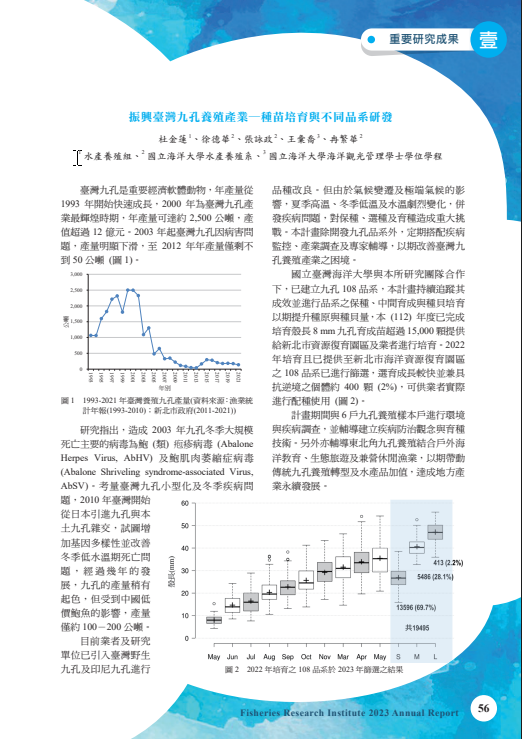
Evidence:
https://www.tfrin.gov.tw/theme_data.php?theme=book_data&sub_theme=important&id=5044
https://usr.ntou.edu.tw/var/file/90/1090/img/1658/539200718.pdf
11. An international discussion on aquatic fungal diversity
國際水生真菌多樣性討論
We traveled to Bangkok, Thailand to discuss with the world renowned mycologist Prof. Gareth Jones, polar mycologist Prof. Siti Aisyah Alias and tropical mycologist Dr. Jariya Sakayaroj on diversity, physiology and ecology of aquatic (marine and freshwater) fungi and future collaborations on the topics.
Sustainable Impact:Researchers from National Taiwan Ocean University visited Bangkok, Thailand, to discuss potential collaborations with leading mycologists — Prof. Gareth Jones (Saudi Arabia), Dr. Siti Aisyah Alias (Malaysia), and Dr. Jariya Sakayaroj (Thailand).The meeting focused on comparative studies of fungi from Guishan Island hydrothermal vents, polar regions, and tropical waters, addressing biodiversity, physiology, ecology, and climate change impacts.Future cooperation will include joint research visits and co-authored publications.This international partnership promotes marine microbial diversity studies and climate resilience, embodying SDG 14.3.3 (marine ecosystem research and climate adaptation) and SDG 17.2.1 (global scientific cooperation and knowledge exchange).
遠赴泰國曼谷與世界著名沙地阿拉伯真菌學家 Gareth Jones 教授、馬來西亞極地真菌學家 Siti Aisyah Alias 博士和泰國熱帶真菌學家 Jariya Sakayaroj 博士討論對在極端水生環境生長的真菌領域在未來的可能合作計畫,例如比對龜山島熱泉環境真菌、極地真菌和熱帶真菌之多樣性、生理生長與生態,以及氣候變遷對這些真菌之影響。未來的合作項目包括短期研究訪視和論文寫作。
永續影響力:國立臺灣海洋大學研究團隊遠赴泰國曼谷,與沙烏地阿拉伯真菌學家 Gareth Jones 教授、馬來西亞極地真菌專家 Siti Aisyah Alias 博士及泰國熱帶真菌學者 Jariya Sakayaroj 博士進行學術會晤,探討極端水生環境真菌的多樣性與氣候變遷影響等議題。雙方交流內容包括比對龜山島熱泉、極地與熱帶真菌的生理生長特性與生態功能,並規劃後續短期研究訪視及共同撰寫論文等合作計畫。此次跨國學術合作促進了海洋微生物多樣性研究與氣候變遷因應策略的發展,展現海大推動國際科研合作及海洋生態永續的決心,具體實踐SDG 14.3.3與SDG 17.2.1的目標。
Evidence:
12. Effects of dnd1 mutation on primordial germ cell migration and sex determination in freshwater angelfish, and the consequent impacts of germ-cell deficiency on fatty-acid and energy metabolism.
探討淡水神仙魚 dnd1 基因突變對原始生殖細胞遷移、性別決定脊因此缺乏生殖細胞對脂肪酸與能量代謝改變之影響
We investigate how dnd1 mutation shapes development and metabolism in freshwater angelfish. Using CRISPR-induced alleles, we tracked primordial germ cell migration, quantified gonadal differentiation, and profiled hepatic and muscular lipid metabolism. dnd1 mutants lacked germ cells, showed disrupted PGC guidance, and skewed sex determination toward sterile, masculinized phenotypes. Transcriptomics and qPCR revealed downregulation of lipogenesis genes and enhanced beta-oxidation pathways, consistent with reduced total fatty acids and altered SFA/MUFA/PUFA ratios. Infection and fasting challenges indicated limited energetic flexibility. Our results link germ-line deficiency to systemic metabolic reprogramming, highlighting crosstalk among reproduction, immunity, and energy balance, and informing selective breeding strategies.
Sustainable Impact: This study investigates how dnd1 mutations reshape the development and metabolism of freshwater angelfish using CRISPR-induced alleles, tracking germ cell migration, gonadal differentiation, and lipid metabolism. The research aligns with several SDG14 sub-targets.
It directly contributes to SDG14.3.1 and 14.3.3, which emphasize research and monitoring activities that assess and understand the health and functioning of aquatic ecosystems. By revealing how genetic disruptions in reproductive systems lead to metabolic reprogramming and reduced energy resilience, the study provides insights relevant to maintaining aquatic biodiversity and biological balance.
Furthermore, the findings resonate with SDG14.4.1 and 14.4.2, which call for effective water quality standards and actionable plans to reduce pollutants. The metabolic implications of germline deficiency illustrate how biological stress can alter ecological health indicators, thereby informing pollution prevention and sustainable aquaculture practices.
Finally, the project supports SDG14.5.2, which stresses the importance of monitoring the health of aquatic ecosystems. The integration of molecular, physiological, and environmental data provides a model for long-term monitoring of fish populations and ecosystem resilience. Overall, this research bridges molecular biology and sustainability science, contributing to the protection and sustainable use of aquatic life.
本研究探討 dnd1 突變如何形塑淡水神仙魚的發育與代謝。以 CRISPR 誘導等位基因,追蹤原始生殖細胞(PGC)遷移、量化性腺分化,並分析肝臟與肌肉的脂質代謝。dnd1 突變體缺乏生殖細胞,PGC 導引受擾,性別決定偏向不育的雄性化表型。轉錄體與 qPCR 顯示脂質生成路徑下調、β-氧化上升,與總脂肪酸降低及 SFA/MUFA/PUFA 比例改變相一致。感染與飢餓挑戰顯示其能量彈性受限。結果連結生殖系缺陷與全身代謝重組,突顯生殖、免疫與能量平衡之間的交互作用,並為選育策略提供參考。
永續影響力:本研究透過基因編輯與代謝分析,探討 dnd1 突變對淡水魚生殖與代謝的影響,對應至 SDG14 的多項細項。研究涉及水生生物生殖與能量代謝機制,符合 14.3.1 與 14.3.3 強調的「保護和可持續利用海洋,維護生態系統及其生物多
樣性」精神;同時藉由分析代謝異常對環境與生理穩定的影響,呼應 14.4.1 與 14.4.2 關於「水質保育與減少塑膠垃圾」。整體而言,本研究促進水生生態健康與可持續管理之知識累積,並符合 14.5.2 強調的「監測水生生態系統健康」目標。
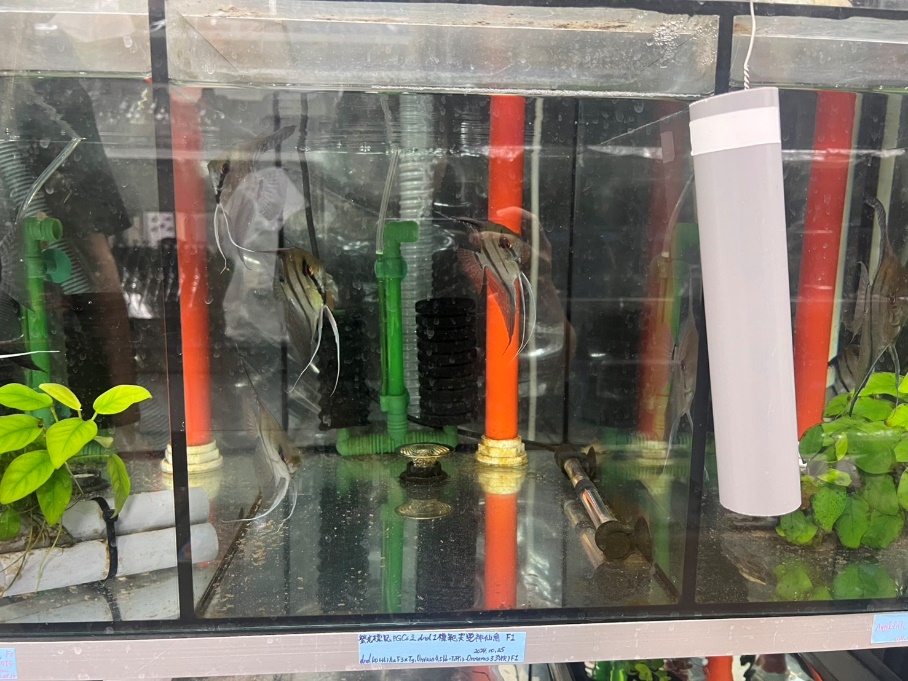
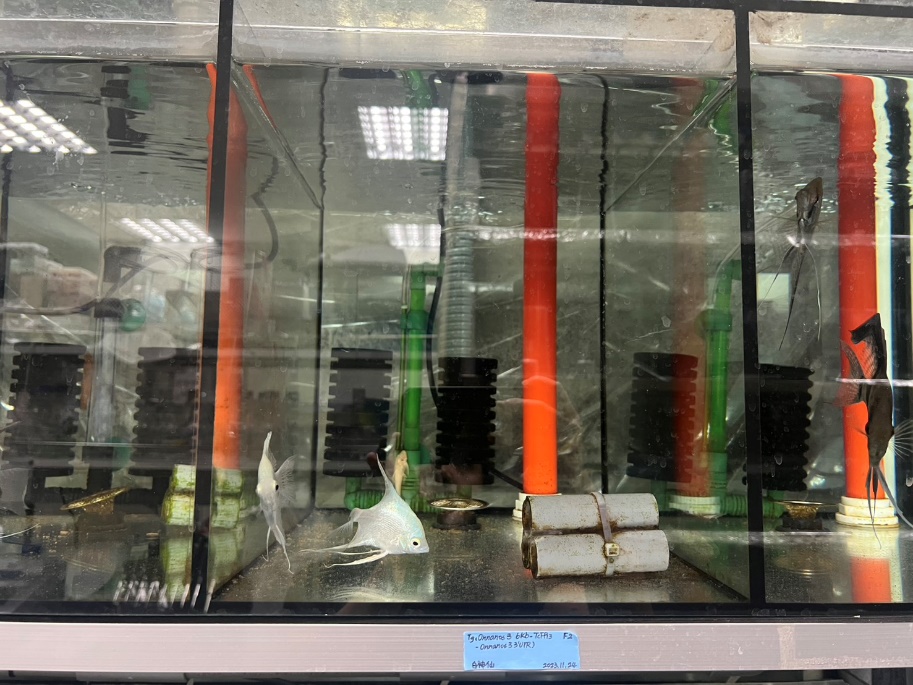
Evidence:
13 Investigation on aquaculture carbon sink and establishment of measurement methodology
養殖漁業碳匯調查及建立量測方法學研究
Due to the absence of a matching Monitoring, Reporting, and Verification (MRV) mechanism in our country, the national greenhouse gas emissions inventory has yet to establish wetland-related carbon sink data. In order to understand the overall carbon sink variations and potential reductions in emissions in our country, as well as to adhere to the three core principles (measurable, verifiable, and reportable) and five key characteristics (additivity, conservatism, permanence, avoidance of harm, and avoidance of double counting) required for future voluntary reduction projects, this project will focus on carbon sinks in aquaculture, including the milkfish and sea bass farming industries. We will measure the greenhouse gas emissions and carbon sinks in water bodies and sediments, and analyze their local coefficients. The goal is to accurately estimate the carbon sink or carbon source capabilities of wetlands in line with the international trend towards net-zero emissions and to achieve the domestic net-zero emissions policy objectives.
Sustainable Impact: This project addresses the current gap in Taiwan’s national greenhouse gas inventory, which lacks wetland carbon sequestration data. It focuses on measuring greenhouse gas emissions and carbon storage in milkfish and seabass aquaculture systems, including both water and sediment compartments, to establish localized carbon coefficients. The study supports the development of Taiwan’s Monitoring, Reporting, and Verification (MRV) framework and aligns with the three key MRV principles—measurability, verifiability, and reportability—as well as the five essential attributes of carbon management: additionality, conservativeness, permanence, avoidance of leakage, and prevention of double counting.
The outcomes will enhance national understanding of wetland carbon fluxes, inform voluntary mitigation programs, and contribute to net-zero strategies under SDG 13.3–13.4. Simultaneously, the research advances sustainable aquaculture and coastal wetland carbon management, aligning with SDG 14.2–14.3. By quantifying blue carbon potential and integrating it into national climate policy, this project builds a scientific foundation for low-carbon aquaculture and climate-resilient marine ecosystems in Taiwan.
因我國尚未建立相符之監測、報告與驗證機制(MRV),國家溫室氣體排放清冊尚未建立濕地相關碳匯量數據,為了解我國整體之碳匯變動量及可減少之排放量,以及未來自願減量專案中所需之三大原則(可量測、可驗證、可報告)和五大特性(外加性、保守性、永久性、避免產生危害及避免重複計算),本案將針對養殖漁業碳匯,包含虱目魚及鱸魚養殖產業,進行水體及底土之溫室氣體與碳匯量測,並分析其本土係數,期望可精確的推估濕地的碳匯或碳源能力,以符合國際淨零排放趨勢及達到國內淨零排放政策目標。
永續影響力:本計畫針對我國尚未納入國家溫室氣體清冊之「濕地碳匯」議題,進行養殖漁業(虱目魚與鱸魚產業)水體與底土之溫室氣體排放與碳匯量測,建立本土化碳吸存係數,補足我國MRV(監測、報告、驗證)機制缺口。研究結果將有助於掌握濕地碳源與碳匯變動,為自願減量專案奠定基礎,符合「可量測、可驗證、可報告」三原則及五項碳管理特性(外加性、保守性、永久性、避免危害、避免重複計算)。 此研究不僅支援國家淨零排放政策與氣候治理(SDG13.3.1–13.4.1),亦促進海岸與養殖濕地的生態碳匯功能理解(SDG14.2.1–14.3.3),為台灣藍碳管理與低碳漁業發展提供重要實證依據。
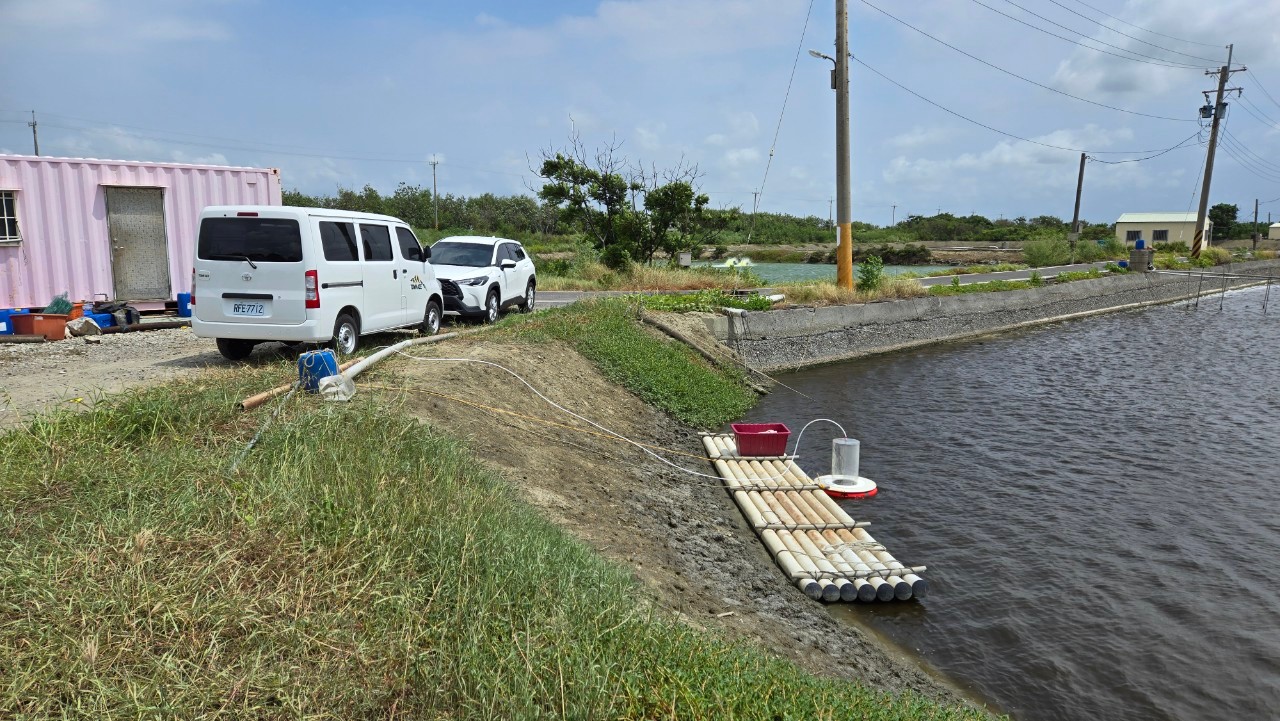
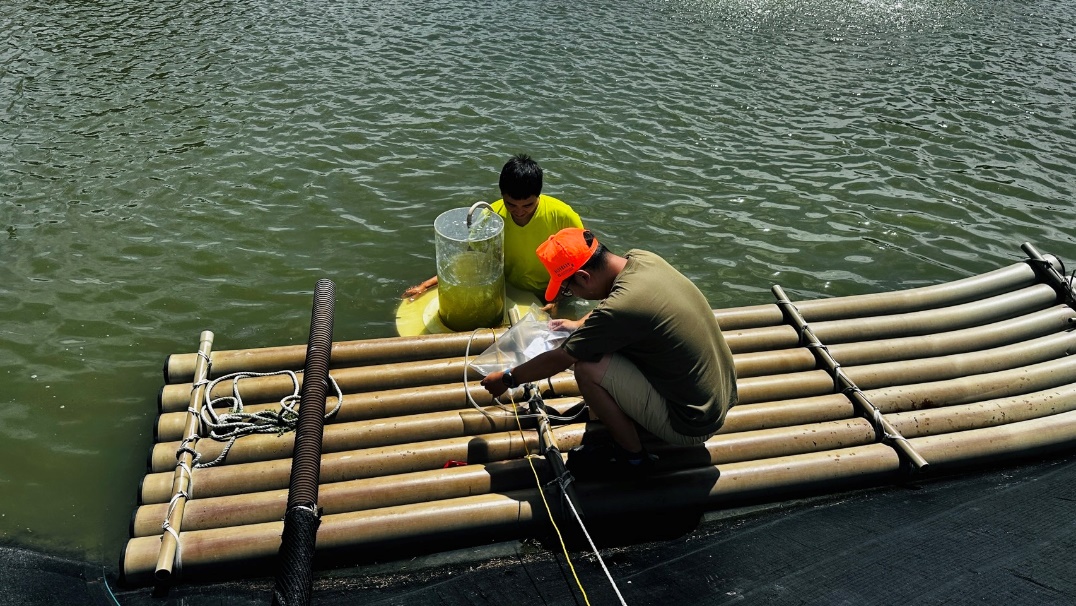
Evidence: